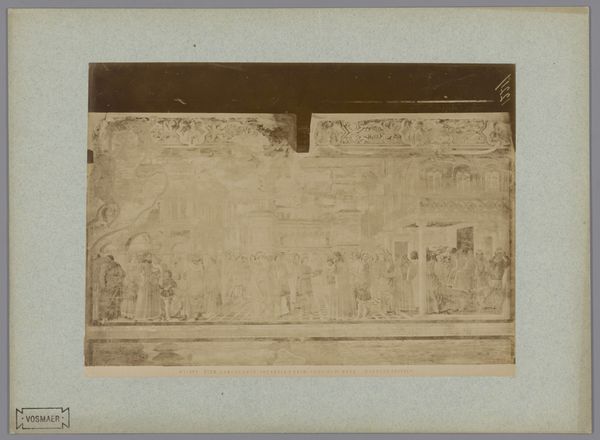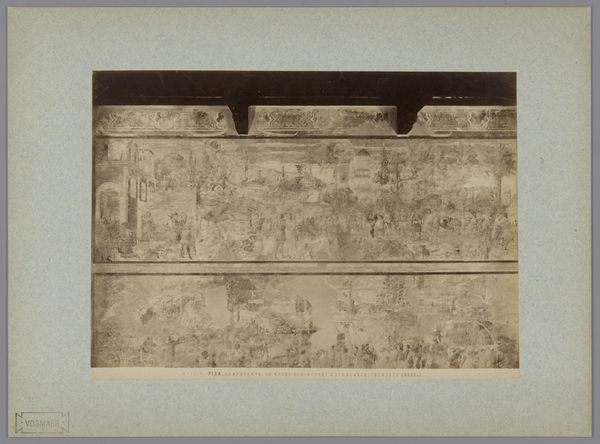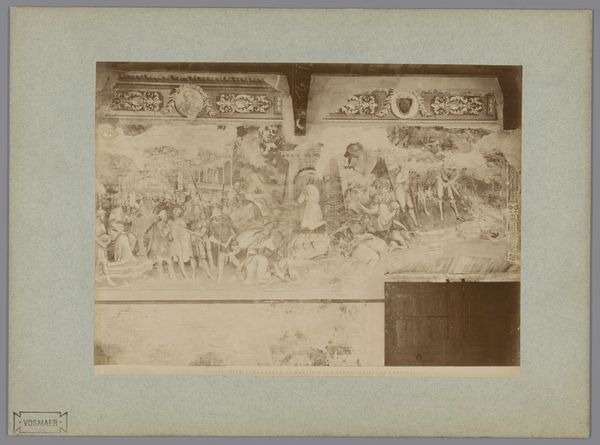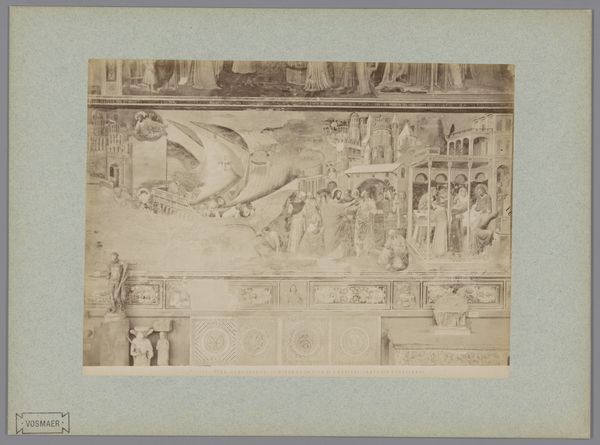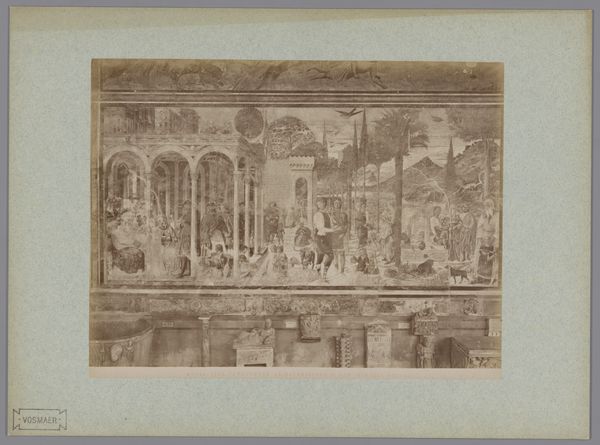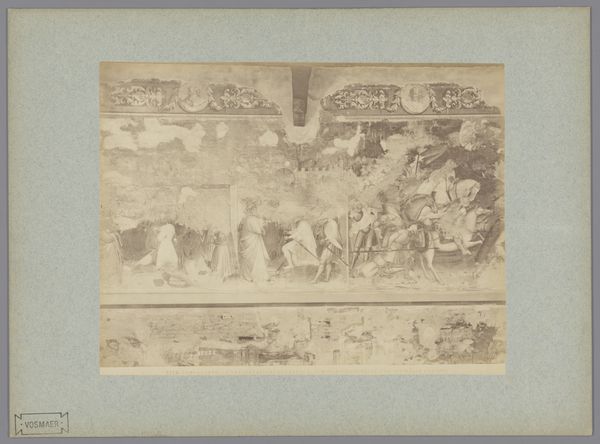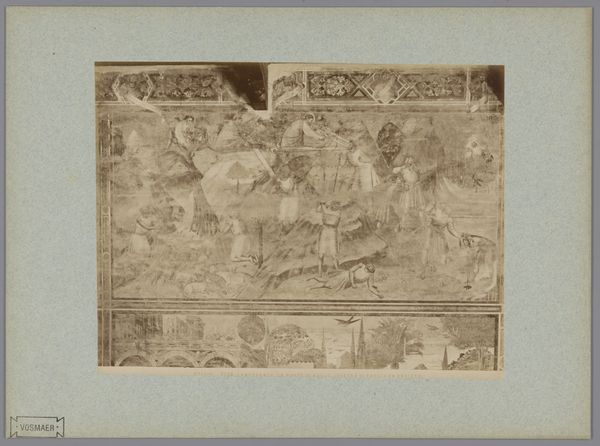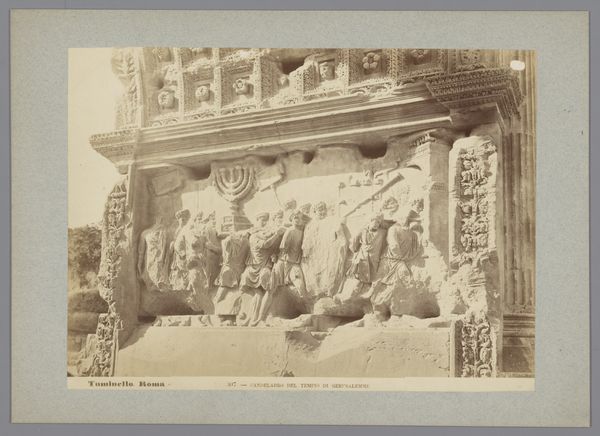
Fotoreproductie van het fresco Brand van Sodom naar Benozzo Gozzoli in het Camposanto te Pisa, Italië 1857 - 1900
0:00
0:00
print, fresco, photography, gelatin-silver-print
#
narrative-art
# print
#
landscape
#
fresco
#
photography
#
gelatin-silver-print
#
history-painting
#
italian-renaissance
Dimensions: height 189 mm, width 256 mm, height 261 mm, width 355 mm
Copyright: Rijks Museum: Open Domain
Curator: I find myself drawn into the past with this gelatin-silver print. It’s a photographic reproduction of a fresco, titled "Brand van Sodom" ("The Fire of Sodom"), by Benozzo Gozzoli, originally located in the Camposanto in Pisa. The Fratelli Alinari, an Italian firm, created this reproduction sometime between 1857 and 1900. What’s your first reaction? Editor: My initial impression is somber, muted. It looks like a faded tapestry. It's interesting to think about the layers here. We’re seeing a photographic representation of a painted scene, each medium adding its own spin. The figures seem to dissolve into a landscape equally surreal and menacing. It whispers more of devastation than screams of terror. Curator: Absolutely. Gozzoli’s original fresco, of course, depicted the biblical destruction of Sodom. What I find intriguing is how the Alinari brothers transformed this monumental, colorful fresco into something so intimate, almost archaeological. Photography here serves less as documentation, but more like another material extracting narrative elements and repurposing its religious impact, making it another artifact in the age of mechanical reproduction. Editor: Precisely! By rendering it into grayscale, it feels like the Alinari brothers emphasize its historicity. Suddenly, we are far removed from the fresco's original function inside of the Camposanto as both decoration and devotion, which had an economy of labor and artistic knowledge that, by 1857, photography democratized to a great degree. Here the "art" isn't in the rendering or the moment captured, but more in its status as commodity. And, perhaps ironically, the photograph might endure far longer than the original fresco itself. Curator: A fascinating point! It invites contemplation not only of faith and divine punishment, but the nature of reproduction itself. This work provides us with tangible insight to question our notions about materiality and accessibility of the Old Masters, what becomes valued, and who dictates its endurance. Editor: Yes. It reveals much about what remains, how it transforms through production.
Comments
No comments
Be the first to comment and join the conversation on the ultimate creative platform.
